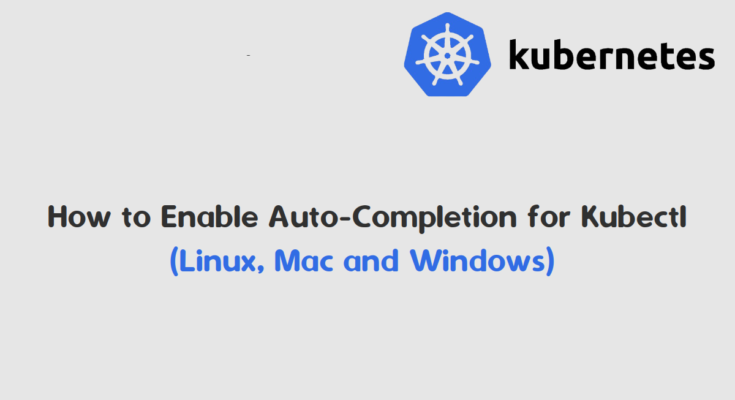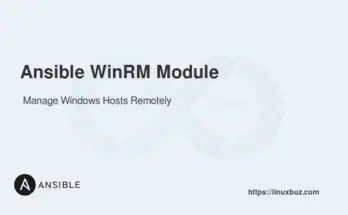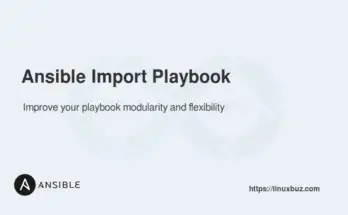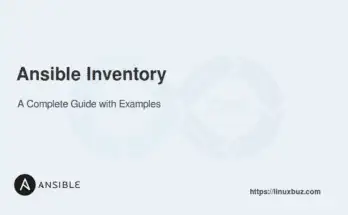If you frequently use kubectl to manage your Kubernetes clusters, you know how powerful this command-line tool is. However, typing long commands and remembering exact resource names can be a hassle. Fortunately, enabling auto-completion for kubectl can make your life much easier. With auto-completion, you can quickly fill in commands, arguments, and resource names, which speeds up your workflow and reduces errors.
In this guide, I’ll explain how to enable auto-completion for kubectl on Linux, Windows, and Mac.
Table of Contents
Why Enable Auto-Completion?
Before we get started with the commands, let me explain why enabling auto-completion is so beneficial:
- Efficiency: Auto-completion allows you to quickly fill in commands, options, and resource names without typing them out entirely.
- Error Reduction: It helps in reducing typos and syntax errors by suggesting the correct command or resource name.
- Convenience: Navigating complex Kubernetes environments becomes much easier when you have auto-completion to assist you.
Now, let’s dive into enabling auto-completion for kubectl on Linux, Mac, and Windows.
Enable Auto-Completion for Kubectl in Linux (Bash)
Follow the steps below to enable auto-completion for kubectl in Linux.
Step 1: Verify Kubectl Installation
First, ensure that kubectl is installed and properly configured on your system. You can verify this by running:
# kubectl version --clientThis command should output the version of kubectl you have installed.
Client Version: version.Info{Major:"1", Minor:"21", GitVersion:"v1.21.0", GitCommit:"abcdef1234567890", GitTreeState:"clean", BuildDate:"2021-05-05T12:34:56Z", GoVersion:"go1.16.3", Compiler:"gc", Platform:"linux/amd64"}Step 2: Install bash-completion
To enable auto-completion, you need to have bash-completion installed. If it’s not already installed, you can do so using the following command:
# apt-get install bash-completionThis command installs the necessary package for enabling auto-completion in bash.
Step 3: Enable Kubectl Auto-Completion
Next, you need to configure your shell to use kubectl auto-completion. Open your terminal and add source <(kubectl completion bash) to your ~/.bashrc file.
# echo "source <(kubectl completion bash)" >> ~/.bashrcThis command appends the required source command to your .bashrc file.
Finally, apply the changes by sourcing your .bashrc:
# source ~/.bashrcAfter running this command, auto-completion should be enabled for kubectl in your bash shell.
Enable Auto-Completion for Kubectl in Mac (Bash)
Here is a step by step guide to enable auto-completion for kubectl on Mac.
Step 1: Install bash-completion
If you’re using a Mac, you can install bash-completion using Homebrew. Run the following command:
# brew install bash-completionStep 2: Configure bash-completion
Next, add bash-completion and kubectl auto-completion to your shell configuration file. Open your ~/.bash_profile file in an editor:
# nano ~/.bash_profileAdd the following lines:
if [ -f /usr/local/share/bash-completion/bash_completion ]; then
. /usr/local/share/bash-completion/bash_completion
fi
source <(kubectl completion bash)Save the file and exit the editor.
Step 3: Apply Changes
To apply the changes, source your ~/.bash_profile:
# source ~/.bash_profileAfter running this command, auto-completion should be enabled for kubectl in your bash shell on Mac.
Enable Auto-Completion for Kubectl in Windows (Powershell)
Here is step by step guide to enable auto-completion for kubectl in Windows.
Step 1: Install posh-kubectl Module
For Windows users, you can enable auto-completion in PowerShell by installing the posh-kubectl module. Run the following command:
# Install-Module -Name posh-kubectl -Scope CurrentUserThis command installs the posh-kubectl module, which adds kubectl auto-completion functionality to PowerShell.
Step 2: Configure PowerShell Profile
Next, add the auto-completion command to your PowerShell profile. Run the following command:
# Add-Content -Path $PROFILE -Value 'source <(kubectl completion powershell)'This command appends the necessary source command to your PowerShell profile.
Step 3: Apply Changes
To apply the changes, reload your PowerShell profile:
# . $PROFILEAfter running this command, auto-completion should be enabled for kubectl in PowerShell.
Verify Kubectl Auto-Completion
To verify that auto-completion is working, type kubectl followed by a space and then press the Tab key twice. You should see a list of possible completions. For example:
# kubectl get [Tab][Tab]You should see output similar to:
clusterroles customresourcedefinition limitranges nodes secrets
clusters daemonsets localsubjectaccessreviews persistentvolumeclaims
configmaps deployments namespaces persistentvolumesTry out a few more commands to understand how auto-completion works. For example:
# kubectl create [Tab][Tab]You should see a list of all options you can use with kubectl create command:
kubectl create
clusterrolebinding (Create a cluster role binding for a particular cluster role)
clusterrole (Create a cluster role)
configmap (Create a config map from a local file, directory or literal value)
cronjob (Create a cron job with the specified name)
deployment (Create a deployment with the specified name)
ingress (Create an ingress with the specified name)
job (Create a job with the specified name)
namespace (Create a namespace with the specified name)
poddisruptionbudget (Create a pod disruption budget with the specified name)
priorityclass (Create a priority class with the specified name)
quota (Create a quota with the specified name)
rolebinding (Create a role binding for a particular role or cluster role)
role (Create a role with single rule)
secret (Create a secret using specified subcommand)
serviceaccount (Create a service account with the specified name)
service (Create a service using a specified subcommand)
token (Request a service account token)Conclusion
Enabling auto-completion for kubectl is a simple but powerful enhancement to your command-line experience. It helps you work more efficiently, reduces errors, and makes exploring kubectl commands much easier. Whether you’re using Linux, Mac, or Windows, you can set up auto-completion in just a few steps. Enjoy the improved productivity!
FAQs
1. Why should I enable auto-completion for kubectl?
Auto-completion improves efficiency by reducing typing and errors when using kubectl.
2. How do I verify if kubectl auto-completion is working?
Type kubectl followed by a space, then press Tab twice. A list of suggestions should appear.
3. Can I enable kubectl auto-completion on Zsh instead of Bash?
Yes, you can enable kubectl auto-completion on Zsh by adding source <(kubectl completion zsh) to your ~/.zshrc file and sourcing it.
4. What is bash-completion, and why is it required?
Bash-completion is a shell extension that enables auto-completion for commands. It is required to use kubectl auto-completion in bash on Linux and Mac.




